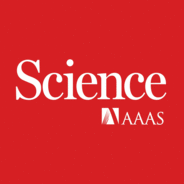Investigating “infantile amnesia,” and how generalized fear after acute stress reflects changes in the brain
This week we have two neuroscience stories. First up, freelance science journalist Sara Reardon looks at why infants’ memories fade. She joins host Sarah Crespi to discuss ongoing experiments that aim to determine when the forgetting stops and why it happens in the first place.
Next on the show, Hui-Quan Li, a senior scientist at Neurocrine Biosciences, talks with Sarah about how the brain encodes generalized fear, a symptom of some anxiety disorders such as social anxiety and post-traumatic stress disorder.
This week’s episode was produced with help from Podigy.
About the Science Podcast
Authors: Sarah Crespi; Kevin McLean; Sara Reardon
Episode page: https://www.science.org/doi/10.1126/science.z9bqkyc
Learn more about your ad choices. Visit megaphone.fm/adchoices

Wissenschaft & Technik
Science Magazine Podcast Folgen
Weekly podcasts from Science Magazine, the world's leading journal of original scientific research, global news, and commentary.
Folgen von Science Magazine Podcast
564 Folgen
-
Folge vom 14.03.2024Why babies forget, and how fear lingers in the brain
-
Folge vom 07.03.2024A dive into the genetic history of India, and the role of vitamin A in skin repairWhat modern Indian genomes say about the region’s deep past, and how vitamin A influences stem cell plasticity First up this week, Online News Editor Michael Price and host Sarah Crespi talk about a large genome sequencing project in India that reveals past migrations in the region and a unique intermixing with Neanderthals in ancient times. Next on the show, producer Kevin McLean chats with Matthew Tierney, a postdoctoral fellow at Rockefeller University, about how vitamin A and stem cells work together to grow hair and heal wounds. This week’s episode was produced with help from Podigy. About the Science Podcast Authors: Sarah Crespi; Kevin McLean; Michael Price Episode page: https://www.science.org/doi/10.1126/science.zfhqarg About the Science Podcast: https://www.science.org/content/page/about-science-podcast Learn more about your ad choices. Visit megaphone.fm/adchoices
-
Folge vom 29.02.2024The sci-fi future of medical robots is here, and dehydrating the stratosphere to stave off climate changeKeeping water out of the stratosphere could be a low-risk geoengineering approach, and using magnets to drive medical robots inside the body First up this week, a new approach to slowing climate change: dehydrating the stratosphere. Staff Writer Paul Voosen joins host Sarah Crespi to discuss the risks and advantages of this geoengineering technique. Next on the show, Science Robotics Editor Amos Matsiko gives a run-down of papers in a special series on magnetic robots in medicine. Matsiko and Crespi also discuss how close old science fiction books came to predicting modern medical robots’ abilities. This week’s episode was produced with help from Podigy. About the Science Podcast Authors: Sarah Crespi; Paul Voosen; Amos Matsiko Episode page: https://www.science.org/doi/10.1126/science.zvvddhw Learn more about your ad choices. Visit megaphone.fm/adchoices
-
Folge vom 22.02.2024What makes snakes so special, and how space science can serve allOn this week’s show: Factors that pushed snakes to evolve so many different habitats and lifestyles, and news from the AAAS annual meeting First up on the show this week, news from this year’s annual meeting of AAAS (publisher of Science) in Denver. News intern Sean Cummings talks with Danielle Wood, director of the Space Enabled Research Group at the Massachusetts Institute of Technology, about the sustainable use of orbital space or how space exploration and research can benefit everyone. And Newsletter Editor Christie Wilcox joins host Sarah Crespi with an extravaganza of meeting stories including a chat with some of the authors of this year’s Newcomb Cleveland Prize–winning Science paper on how horses spread across North America. Voices in this segment: William Taylor, assistant professor and curator of archaeology at the University of Colorado Boulder’s Museum of Natural History Ludovic Orlando, director of the Centre for Anthropobiology and Genomics of Toulouse University of Oklahoma archaeologists Sarah Trabert and Brandi Bethke Yvette Running Horse Collin, post-doctoral researcher Paul Sabatier University (Toulouse III) Next on the show: What makes snakes so special? Freelance producer Ariana Remmel talks with Daniel Rabosky, professor in ecology and evolutionary biology at the University of Michigan, about the drivers for all the different ways snakes have specialized—from spitting venom to sensing heat. This week’s episode was produced with help from Podigy. About the Science Podcast Authors: Sarah Crespi; Ariana Remmel; Christie Wilcox; Sean Cummings Episode page: https://www.science.org/doi/10.1126/science.zabhbwe Learn more about your ad choices. Visit megaphone.fm/adchoices
